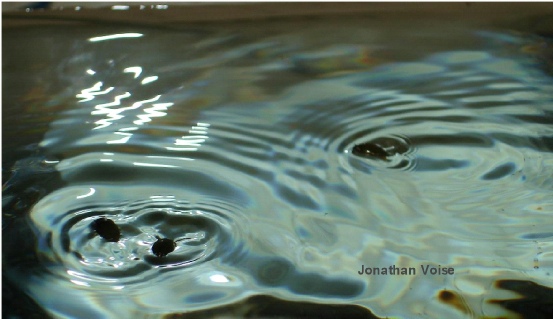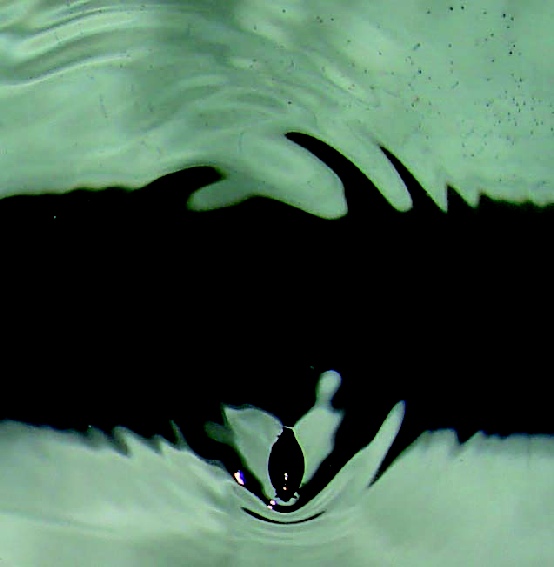Insects living at the air/water interface are subject to capillary phenomena due to surface tension. They use these phenomena to detect preys and conspecific individuals, in particular with capillary waves. Gyrinidae (Coleoptera) which I choose as a model, are supposed to use echolocation on surface water using the waves they generate.
My purpose is to study wave propagation and the echolocation system used by whirligig beetles. I characterized capillary waves produced by Gyrinus substriatus, a primordial step for the study of echolocation. I fond that whirligig beetles have three different types of leg kinematics for swimming, two at low speed and one at high speed. Each type produces a particular pattern of speed and waves. I could also highlight that low and high speeds correspond to speed ranges minimizing resistance forces (fluid resistance and wave resistance). I am currently testing experimentally if whirligig beetles use echolocation for detecting non-moving objects on water surface. I study also another kind of perception, the detection of static deformation of the water surface around objects (meniscus) which could be complementary to echolocation.
I am deeply interested in physical ecology of aquatic insects and particularly in the importance of
Gyrinus substriatus producing waves in an aquarium.




Jonathan Voise

2007-present:. PhD Student, IRBI (France).
2006-2007. Volontaire international, IRD/ICIPE, Nairobi (Kenya).
2005-2006. Master, Université d'Orléans / Université Libre de Bruxelles (France, Belgique).
Keywords:
Air/water interface, capillary waves, echolocation, Gyrinidae,
Wave propagation and echolocation by aquatic insects


Publication List:
Voise J. & Casas J. (2009), The management of fluid and wave resistances by whirligig beetles, J. R. Soc. Interface, in press.



